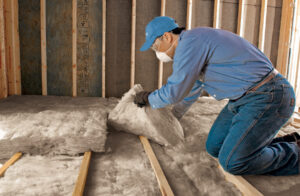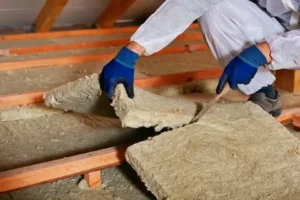Removing insulation that has been in place for three decades is not just about improving comfort or efficiency—it can expose serious health, safety, and structural concerns. Over time, insulation materials can deteriorate, harbor contaminants, or conceal damage that isn’t visible until removal begins. For residents and commercial property owners, understanding these risks helps prevent costly mistakes and protect building occupants. Choosing professional insulation removal services ensures the job is handled safely, thoroughly, and in compliance with best practices, minimizing risks and preparing the space for proper re-insulation.
Below is a closer look at the specific hazards, what causes them, and how to address each issue responsibly.
Hidden Contaminants in Old Insulation
Thirty-year-old insulation may contain harmful substances that were common in older building materials but are now regulated or banned. Removal without proper handling can release dangerous particles into the air.
Asbestos Presence in Older Materials
Many insulation products from past decades—especially vermiculite and certain pipe wraps—contained asbestos fibers. Disturbing these materials can release microscopic fibers into the air, which can be inhaled and cause long-term respiratory disease.
Dust and Particulate Accumulation
Insulation acts like a filter over time, trapping fine dust, dirt, and debris. When insulation is disturbed, these particles can become airborne, causing respiratory irritation and aggravating conditions like asthma.
Chemical Residues from Past Treatments
Some older insulation was treated with fire retardants or pest control chemicals now recognized as hazardous. These chemicals may still be present in the fibers, creating a risk when touched or inhaled.
Biological Hazards from Long-Term Exposure
Insulation can be a refuge for pests and microorganisms. After 30 years, biological contamination is a high probability.
Mold and Fungal Growth
Water leaks or high humidity can allow mold to colonize insulation. Long-term exposure can lead to black mold contamination, which releases spores that affect indoor air quality and health.
Rodent and Insect Infestation
Rodents and insects often use insulation for nesting. Droppings, urine, and carcasses can contaminate the material with bacteria and viruses.
Allergen Build-Up
Decades of exposure to organic matter—pollen, pet dander, and insect fragments—can turn insulation into a concentrated allergen source.
Structural Risks Revealed During Removal
Insulation can conceal underlying damage to the building structure. Removal often uncovers problems that need immediate attention.
Moisture Damage to Framework
Water intrusion over time can cause wood rot and weaken the structural framework. This damage is often hidden until insulation is removed.
Corrosion on Metal Elements
In commercial spaces, pipes and ductwork passing through insulated areas may have rusted due to condensation or trapped moisture.
Electrical Hazards
Old wiring surrounded by insulation may have deteriorated insulation jackets. Contact during removal can expose live wires and create shock or fire risks.
Air Quality Concerns During Removal
Removing aged insulation can cause significant air contamination if not done correctly.
Fiber Release from Fiberglass
Fiberglass breaks down over decades, and removing it can release loose fibers that irritate the eyes, skin, and respiratory system.
Release of Toxic Spores and Pathogens
Disturbing insulation contaminated with mold or pest waste can release spores and microbes that remain airborne for hours.
Comparison of Air Contamination Risk by Material Type
| Insulation Type | Common Age-Related Hazard | Air Quality Risk Level |
|---|---|---|
| Fiberglass Batts | Fiber release, dust accumulation | Medium |
| Vermiculite | Asbestos contamination | High |
| Cellulose | Mold growth, chemical treatments | Medium-High |
| Mineral Wool | Fiber irritation, dust | Medium |
Safety Measures Before and During Removal
Recognizing potential hazards before starting the job allows for better protection and compliance with safety regulations.
Inspection and Testing
Before removal begins, sampling and lab testing should confirm whether asbestos, mold, or other hazards are present. This step determines the safety protocols required.
Containment and Ventilation
Physical barriers, negative air machines, and controlled ventilation reduce the spread of airborne particles during removal.
Personal Protective Equipment (PPE)
Workers should use respirators, gloves, and protective clothing to avoid inhalation and skin contact.
Disposal Requirements for Contaminated Insulation
Handling and disposing of old insulation is not as simple as putting it in a bin. Certain materials are classified as hazardous waste.
Regulated Disposal for Asbestos Materials
Asbestos-containing insulation must be sealed in leak-proof containers, labeled clearly, and taken to approved disposal facilities.
Mold-Contaminated Waste Handling
Moldy insulation should be double-bagged and removed promptly to prevent spore release in storage areas.
Local and Federal Compliance
Disposal regulations vary by jurisdiction. Failing to comply can result in fines or legal issues.
Common Question: Why Can’t Old Insulation Just Be Covered Up?
Covering old insulation instead of removing it may seem easier, but it traps contaminants, hides structural damage, and can increase moisture problems. Encapsulating deteriorated material without addressing hazards only postpones the risk and can make future removal more dangerous.
Conclusion
Old insulation is not just inefficient—it can hide serious threats to health, air quality, and building safety. Thirty years of exposure to moisture, pests, and environmental contaminants transforms it from a protective layer into a potential hazard source. Identifying these risks before starting removal helps property owners avoid unexpected costs and protect occupants from exposure.
Proper inspection, containment, and regulated disposal are non-negotiable steps. Treating insulation removal as a controlled, safety-focused process ensures a cleaner, safer space and prevents hidden dangers from affecting building occupants for years to come. Once the old materials are removed, replacing them with an eco-friendly insulation solution not only restores efficiency but also supports long-term sustainability and healthier indoor en
FAQs
What types of old insulation are most likely to contain asbestos?
Vermiculite insulation and certain older pipe wraps are the most common asbestos-containing materials. Professional testing is required to confirm asbestos presence before any disturbance.
How can I tell if my insulation has mold?
Visible black or green patches, musty odors, and staining on nearby wood or drywall may indicate mold contamination. Laboratory testing confirms the type and severity.
Is fiberglass dangerous after 30 years?
Fiberglass itself is not chemically toxic, but older material may release more loose fibers and accumulated dust, which can irritate the skin and respiratory system during removal.
Why is insulation removal riskier in commercial buildings?
Commercial spaces often have more complex ductwork, wiring, and older structural components, increasing the chance of encountering asbestos, corrosion, or outdated electrical systems.
Can insulation contaminated by pests be cleaned and reused?
No. Once insulation has been contaminated by rodent or insect waste, it should be removed and disposed of, as cleaning cannot fully eliminate health risks.
Reviewer: Ava Clark shared her input based on 6 years of working with spray foam insulation teams. Her focus on customer trust and communication helped shape key parts of this post.

